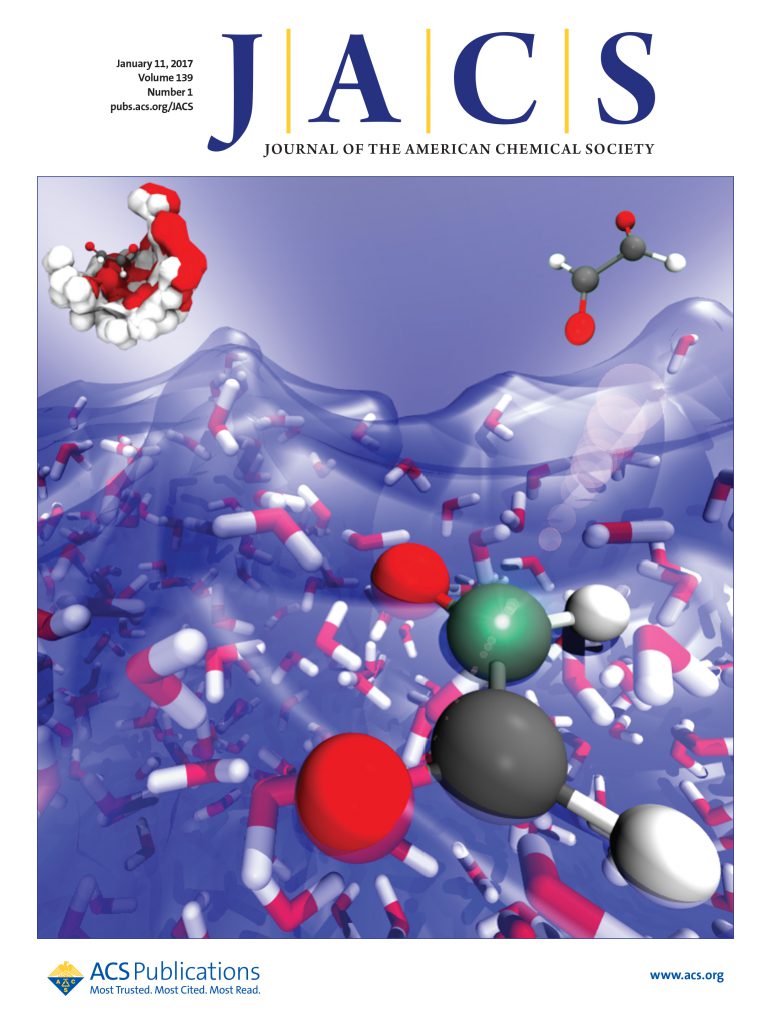Fe-DeAlBEA分子筛上原子分散Pt催化丙烷脱氢的独特行为研究
IF 14.4
1区 化学
Q1 CHEMISTRY, MULTIDISCIPLINARY
引用次数: 0
摘要
大规模用于制造聚丙烯和几种商品化学品的丙烯越来越多地通过催化丙烷脱氢(PDH)生产。原子分散的Pt已成为一种很有前途的PDH催化剂;然而,在高温下稳定原子分散的铂是具有挑战性的。在这里,我们展示了使用高铁含量的脱铝沸石作为稳定分离Pt的宿主,Pt通过Pt - Fe键牢固地锚定在沸石载体上。分离的Pt - fe位点表现出良好的PDH性能,包括高的表观正向生成速率系数(404.8-26.4 mol丙烯/mol Pt·bar·s)和高选择性(≥96%),在823 K的H2存在下。表征不同Pt负载下PDH反应速率的动力学数据表明,原子分散的Pt对丙烯生成的催化速率与H2分压无关,而高Pt负载下形成的金属Pt团簇对反应的催化速率与H2分压呈轻微负相关。吸附CO的红外光谱、x射线吸收光谱和高角角暗场扫描透射电镜证实了Pt形态随Pt加载的变化,表明Pt分散引起的动力学变化是反应机理改变的结果。本文章由计算机程序翻译,如有差异,请以英文原文为准。

Unraveling the Unique Behavior of Atomically Dispersed Pt on Zeolite Fe-DeAlBEA for Catalyzing Propane Dehydrogenation with Cofed Hydrogen
Propene, used on a large scale to manufacture polypropylene and several commodity chemicals, is increasingly produced by catalytic propane dehydrogenation (PDH). Atomically dispersed Pt has emerged as a promising candidate catalyst for PDH; however, stabilizing atomically dispersed Pt at high temperatures is challenging. Here, we demonstrate the use of dealuminated zeolite beta with a high Fe content as a host for stabilizing isolated Pt, which is anchored strongly to the zeolite support by Pt–Fe bonds. The isolated Pt–Fe sites exhibit promising PDH performance, including a high apparent forward rate coefficient for propene formation (404.8–26.4 mol propene/mol Pt·bar·s) and a high selectivity (≥96%) at 823 K in the presence of H2. Kinetics data characterizing the rate of PDH with a range of Pt loadings show that atomically dispersed Pt catalyzes propene formation at rates independent of H2 partial pressure, whereas metallic Pt clusters, formed at high Pt loadings, catalyze the reaction with a slightly negative dependence on H2 partial pressure. The shift in Pt speciation with Pt loading, confirmed by infrared spectroscopy of adsorbed CO, X-ray absorption spectroscopy, and high-angle angular dark field scanning transmission electron microscopy, suggests that the observed change in kinetics with Pt dispersion is a consequence of a change in the reaction mechanism.
求助全文
通过发布文献求助,成功后即可免费获取论文全文。
去求助
来源期刊
CiteScore
24.40
自引率
6.00%
发文量
2398
审稿时长
1.6 months
期刊介绍:
The flagship journal of the American Chemical Society, known as the Journal of the American Chemical Society (JACS), has been a prestigious publication since its establishment in 1879. It holds a preeminent position in the field of chemistry and related interdisciplinary sciences. JACS is committed to disseminating cutting-edge research papers, covering a wide range of topics, and encompasses approximately 19,000 pages of Articles, Communications, and Perspectives annually. With a weekly publication frequency, JACS plays a vital role in advancing the field of chemistry by providing essential research.

 求助内容:
求助内容: 应助结果提醒方式:
应助结果提醒方式:


